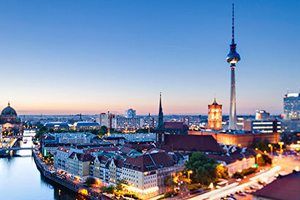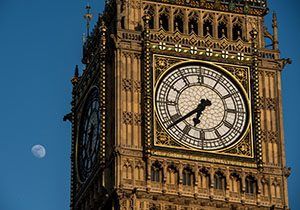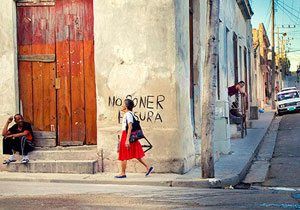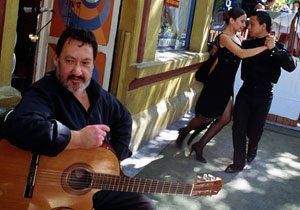Canada facts
Majestic mountains, frozen glaciers, beautiful cities and incredible wildlife…discover our fantastic fact about Canada!
Majestic mountains, frozen glaciers, beautiful cities and incredible wildlife – discover our fantastic facts about Canada!
Facts about Canada
Official Name: Canada
Form of Government: Federal parliamentary state
Capital: Ottawa
Population: 36,307,820
Official Language: English, French
Money: Canadian dollar
Area: 9,970,610 square kilometres
Major Mountain Ranges: Rockies, Coast, Laurentian
Major Rivers: St. Lawrence, Mackenzie
Canadian flag
Map of Canada
Canada: geography and landscape
Canada is one seriously huge place! Measuring 4,600km from north to south, the country spans more than half the Northern Hemisphere. And at a whopping 5,500km from east to west, it stretches across six time zones! A vast, rugged land, Canada is the second largest country in the world (Russia being the largest) but only 0.5% of the world’s population live there.
Canada has a varied landscape, with majestic mountains, rolling plains, forested valleys, and beautiful blue rivers and lakes. The Canadian Shield, a hilly region of lakes and swamps, stretches across northern Canada and has some of the oldest rocks on Earth.
In Canada’s far north lies the frozen Arctic. Here, ice, snow and glaciers dominate the landscape. Brrrrrr! Despite the cold, harsh climate, Native Canadians, called First Nations people, live in this region, where they hunt and fish for food.
Canada’s wildlife and nature
Canada’s remote north and extensive forests are home to lots of wonderful wildlife, from bears, wolves, deer, mountain lions, beavers and bighorn sheep, to smaller animals such as raccoons, otters and rabbits. The country’s lakes and rivers – which contain about 20 percent of all fresh water on Earth – are full of fish such as trout and salmon.
Canada’s prairies (open grasslands) in the south are home to American buffalo and pronghorn antelope. And in the sprawling evergreen forests of northern Canada, moose and black bears are amongst the amazing animals that can be found. Even farther north, herds of reindeer and musk ox roam the cold, bare tundra.
Canadians work hard to protect their native wildlife, and the country has 41 national parks and three marine conservation areas. Nevertheless, species like wolves, lynx and Atlantic fish have faced threats from overhunting and overfishing.
History of Canada
The first people to come to Canada arrived between 15,000 and 30,000 years ago across a land bridge that joined Asia and North America. Around A.D. 1000, the Viking explorer Leif Eriksson reached Newfoundland, Canada. He tried to establish a settlement, but it didn’t last long.
In the 16th century, French and British settlers arrived. Land disputes between farmers and fur traders led to four wars between 1689 and 1763. The final war, called the French and Indian War, left the British in control of Canada, but French influence continued and remains strong even today.
In 1867, Ontario, Quebec, Nova Scotia and New Brunswick combined to form a dominion with its own government, parliament and prime minister – and Manitoba joined soon after. In 1931, Canada became an independent nation.
Following numerous territorial changes over the years, today Canada is made up of ten provinces and three territories.
Canadian people and culture
In some ways Canada is many nations in one. Descendants of British and French immigrants make up about half the population. They were followed by other European and Asian immigrants. First Nations peoples make up about four percent of the population.
Inuit people live mostly in the Northwest Territories and Nunavut. Many Native Canadians live on their traditional lands, but many others have moved to cities across Canada. First Nations artwork is widely recognised and is seen as a symbol of Canadian culture.
Canada’s government and economy
The British monarch is the head of state of Canada. The monarch is represented by a governor-general, who has very limited powers. Laws are made by Canada’s elected federal government, which includes a parliament and a prime minister.
Britain’s Quebec Act of 1774 granted Quebec its own legal and religious rights. Despite this concession, many Quebec citizens have long sought independence. In votes held in 1980 and 1995, Quebec decided to stay in Canada. But the second vote was very close, and the debate is still alive.
Canada has provided fish, furs and other natural resources to the world since the 1500s. Today, it is a world leader in agricultural production, telecommunications and energy technologies. The vast majority of Canada’s exports go to the United States.
Image credits: Map of Canada: National Geographic Maps. Picture of Telus World of Science in Vancouver, Canada: Dan Breckwoldt, Dreamstime. Picture of building in Victoria, British Columbia: Chrishowey, Dreamstime. All other pictures: Getty Images UK.
What did you make of our facts about Canada? Let us know by leaving a comment, below!
More Like Countries

Germany Facts

Say goodbye to Big Ben’s bongs!

Cuba facts!

















LEAVE A COMMENT
THANK YOU
Your comment will be checked and approved shortly.
WELL DONE,
YOUR COMMENT
HAS BEEN ADDED!
COMMENTS
its pretty cool
canada is my sister
i like it
I love National Geographic!
I love National Geographic!
cool
Cool
Awesome Sauce
hi
I mean it helped me at school so I hope I do well lol
This makes work easy it is so good
this is helping me with my schoolwork
LOVE IT! Thanks for the info about Canadaaaa!
This gave me some helpful info! Thank you so much!
amazing wildlife pics
Fantastic
Amazing
Never knew Canada was this amazing!!
Lol
canada is a fantasic place to go with your family
what IS the national dish of Canada? these donut things, rayhana!
What is the national dish of Canada????????
Need more history for CANADA
Canada is also the country that invented maple syrup!
I have only been to Ontario Canada so I have never been to those cool places
really help full can help you loads when learning about Canada at school
CUSTOMIZE YOUR AVATAR